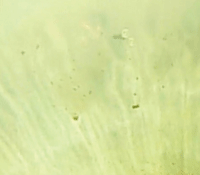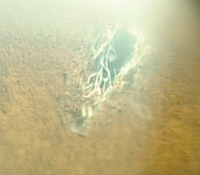Primary angle-closure glaucoma (ACG) is a relatively uncommon condition, accounting for less than 10% of all diagnosed cases of glaucoma in the US. However, its importance as a health care issue is far greater than the relatively small number of cases would suggest. In contrast to open-angle glaucoma, in which vision loss is slow and gradual, an acute attack of angle closure glaucoma can lead to blindness within hours or days. Prompt diagnosis and correct treatment are, therefore, critical.
|
Accurate and timely diagnosis of the intermittent and chronic forms of primary ACG is also important, as prophylactic treatment—peripheral iridotomy (PI)—can protect the eye against acute episodes and prevent damage from repeated intermittent attacks or chronic angle closure.
Step by Step
If Van Herick angle assessment indicates narrow angles, further testing needs to be performed for confirmation, including chamber depth estimation and gonioscopy.
Gonioscopy is critical to determine the status of the angle structures that are seen (or not seen) and to confirm that the angle is narrow due to primary pupillary block, not one of the other causes of narrow angles (e.g., plateau iris, neovascular glaucoma or synechial angle closure from inflammatory glaucoma.

|
|
| The "pigment plume" indicates penetration. For a video of peripheral iridotomy, click here. |
We have also recently started performing anterior segment OCT to determine a precise quantitative measurement of how narrow the angles are. An angle of 20° or less signifies a grade 1 or 2 angle and typically requires at least an assessment for laser peripheral iridotomy.
One drop each of brimonidine (Alphagan, Allergan) and pilocarpine are instilled preoperatively to control the risk of IOP spike and make the iris taut for easier penetration with the laser, respectively. The location of the PI is most often placed superiorly at 11:00 or 1:00 in an iris crypt to minimize the amount of laser energy entering the eye. Proparacaine is instilled and the Abraham iridotomy laser lens is placed on the eye with the button of the lens in the superior position.
Proper patient education is critical before and during the procedure, as the patient may experience “popping” (an acoustic sensation in their ears). This is a normal phenomenon experienced during both PIs and capsulotomies. Laser energy of 3.0mJ to 6.0mJ per pulse in a single or double shot pattern is often used to penetrate the full thickness of the iris.
The best indication that the laser has fully penetrated the iris is when the “pigment plume” is seen. Typically, enlargement of the PI hole will continue after the plume until it is about 1mm in size. Occasionally, two holes will be placed, especially if the patient has experienced a true acute angle closure with very highly elevated IOP.
 | |
|
The appearance of the iridotomy immediately after the procedure.
|
One drop of Alphagan is instilled immediately post-laser to minimize risk of IOP elevation. The patient is sent home with an anti-inflammatory, often prednisolone (Pred Forte, Allergan), to be used QID for one week. At the one week post-op visit, the PI hole is observed to ensure no strands or blood vessels are running across the hole as these can encourage re-closure. Gonioscopy and OCT are repeated at the one week post-op and are the best gauges to treatment success for the laser PI.
Laser peripheral iridotomy is an effective therapy for pupillary block, narrow angles and angle closure. Prompt recognition and treatment may save your patient’s vision.
Dr. Lighthizer is an assistant professor and the chief of the specialty care and electrodiagnostics clinics at Oklahoma College of Optometry.



